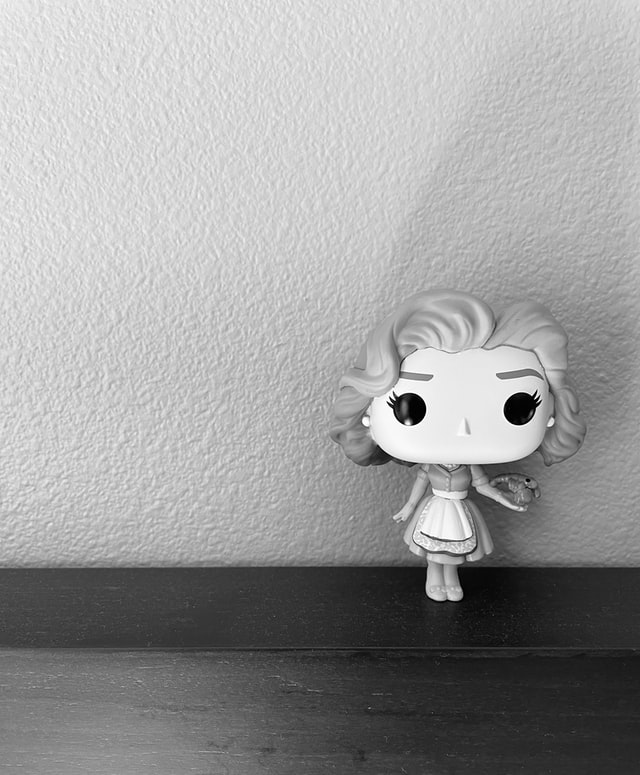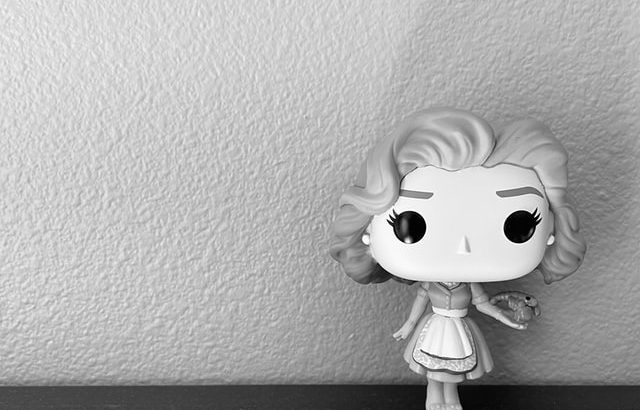
[This post will contain spoilers]
Sorry, not sorry — I’ve been all in on WandaVision.
For the past nine weeks, I have been glued to my TV screen every Friday to tune into WandaVision.
One of the only things to look forward to as my lockdown life persists, the weekly format of churning out a new episode every 7 days has built an anticipation that has reached a fever pitch I haven’t felt since Netflix made the art of binge-watching so accessible. (Thank goodness Disney Plus said no to releasing WandaVision all at once!)
On sylviesoul.com, I primarily discuss writing tips for aspiring writers who hope to someday publish their first novel. This week, however, I’m going off-brand to discuss the MCU television series that has consumed my thoughts and creativity for much of the first quarter of 2021.
One of the most striking things I’ve noticed about WandaVision is how it makes subversion the name of the game. Right off the bat, it’s different from the rest of the MCU properties; instead of a movie, WandaVision is a television series focusing on two members of the Marvel Avengers: Wanda Maximoff and Vision, the carbon-based synthezoid created by Tony Stark in Avengers: Age of Ultron.
Also, unlike the rest of the Marvel properties, WandaVision’s genre isn’t entirely apparent from the start. Thor: Ragnarok is a buddy cop flick, Guardians of the Galaxy is a comedic space-opera, Black-Panther is an Afro-futuristic fantasy sci-fi adventure, and WandaVision is a campy sitcom…until it isn’t.
By the end of episode 3, the show takes a sharp left turn and becomes this psychologically-tinged action mystery drama. Viewers are glued to their seats, waiting eagerly for the clues that are doled out on a weekly basis that will uncover the mystery: what is going on in Westview, New Jersey?
As I rack my brain on the easter eggs almost as laboriously as ScreenCrush and Nerdist deep dives into each episode, I realize I’ve been down this path before. Exactly ten years ago, with a show with a very similar premise.
That’s when it hit me: WandaVision is the MCU’s answer to Puella Magi Madoka Magica.

Hear me out: for those that follow this blog, you know I’m in the process of writing a novel, with heavy inspiration taken from Sailor Moon.
Well, it was through my Hey Arnold! fanfiction Sailor Helga that a fan introduced me to Madoka Magica, one of the best series I’ve watched in the past decade. Therefore, it was only natural that my obsession with the genre would bring me to make parallels between the two shows.
So here are 5 reasons why WandaVision’s true genre is live-action subversive dark magical girl anime:
Despair and Grief Aplenty
As the story unfolds in WandaVision, it is apparent that the main character, Wanda Maximoff, is suppressing some sort of traumatic grief. Although she initially carries on the illusion that everything alright in her perfect town of Westview, it quickly becomes apparent that something is most certainly rotten in Denmark.
And then late in the series, it is revealed that Wanda, consumed with the unfathomable grief of losing both her twin brother, Pietro Maximoff, and her partner Vision, unleashes the true potential of her powers, creating a fabricated world where she has the perfect home and family that she always dreamed of.
There’s a particularly telling scene that hammers down the thesis of Wandavision. In episode 9, we witness a flashback between Wanda, freshly grieving over the loss of her brother, and the newly-formed Vision attempting to console her. It is through this exchange that we get one of the most beautiful lines about grief, let alone in the entire series:
“But what is grief, if not love persevering?”
Compare that to the series Puella Magi Madoka Magica, where viewers are similarly strung along to uncover the secret behind the mysterious Homura Akemi.
It’s eventually revealed the only reason that Homura exists is because she made a Faustian bargain with an intergalactic (not to mention hella ‘sus’) creature named Kyuubey to go back in time and prevent her friend Madoka from making a wish that would ultimately cost her her life.

Out of love for Madoka, Homura relives the same month and a half several times, much like how Wanda relives the storylines of her favourite shows of her youth in order to keep the illusion of Vision alive, though he was killed by Thanos in Avengers: Infinity War.
In the end, both characters receive a cathartic release from their grief, not totally over their loved ones, but able to move forward with their lives.
Foreshadowing Events to Come
One of the things Madoka Magica does exceptionally well is foreshadowing some of the darker events that occur in the series.
They cleverly achieve this through the opening theme song; for example, though the song itself — Connect by the J-pop group ClariS — sounds bright and cheerful, when we see the main character Madoka crying and facing away from the camera, we immediately sense something is amiss.
In fact, Madoka rarely smiles at all in the opening, and when she does, it’s almost bittersweet, like she’s simultaneously holding back tears. Although the song remains constant, the imagery subtly changes between episodes as well (ie. streams of rain that appear like blood on a window, characters being added to the final shot of the theme song…)
Similarly, WandaVision uses theme songs mimicking different eras of television to signal to the viewer that something lurks beneath the veneer. The final three theme songs in particular hammer this home with some pretty telling lyrics:
Epsisode 5:
You wander the world with a vision of what life could be
But then the years come and teach you to just wait and see
Forces may try to pull us apart
But nothing can phase me if you’re in my heart
Crossing our fingers, singing a song
We’re making it up as we go along
Episode 6:
Don’t try to fight the chaos
Don’t question what you’ve done
The game can try to play us
Don’t let it stop the fun
Some days, it’s all confusion
Easy come and easy go
But if it’s all illusion
Sit back, enjoy the show
Episode 7: No lyrics at all, just still images featuring the name of WANDA (with one ominous shot displaying the message “I Know What U Are Doing Wanda”)
Non-Chronological Episodes
In Madoka Magica, we discover that the first episode in the series is not Episode 1, but Episode 10. This is Homura’s backstory fully revealed and we see exactly what motivates her actions in the previous nine episodes.
In WandaVision, we are immediately thrust into the sitcom world, but the true plot doesn’t unfold until in Episode 4, where we are introduced to Monica Rambeau and learn how she is sucked into Wanda’s world. It isn’t until the penultimate episode, Episode 9, where it is revealed what brought about the entire events of WandaVision.
Magic and Witches
It’s apparent from the title, but Madoka Magica is an anime about magical girls, and the witches they combat.
WandaVision is a show that focuses heavily on the magical aspect of the Marvel universe – similar to Dr. Strange and his powers – and is the debut of Wanda Maximoff in her evolved form as the Scarlet Witch, manipulator of chaos magic.
Unsatisfying Conclusion
For some viewers, the ending of Madoka Magica presents more questions that answers; Madoka essentially becomes a God, reality is rewritten, and now no one but Homura is aware that she ever existed.
But what of this new Law of Cycles created to spare magical girls the agony of becoming witches? Has Homura truly moved on from her grief of losing Madoka?
These questions are not given neat little answers at the end of Episode 12, though an attempt is made to rectify this in the film Madoka Magica: Rebellion (whether or not THAT conclusion is satisfying is another story entirely).
Similarly, Wandavision ends on a particularly somber note in Episode 9. Wanda moves on from the illusion she fabricated, but at the cost of losing Vision and the twins she created, Billy and Tommy.
In a post-credit stinger, Wanda can be seen, lost in thought in seclusion and apparently still grieving, but then we are shown her Scarlet Witch form, who is simultaneously studying dark magic from the Darkhold, presumably to find a way to bring Billy and Tommy back.
What do you think? Is it a stretch to see the parallels between WandaVision and Madoka Magica? Have you watched both shows? And should they bring Kathryn Hahn back as Agatha Harkness (because come on, we all know that theme song Agatha All Along slaps)? Leave your thoughts in the comments below!
